The jelly antler mushroom (Calocera viscosa) really stands out in the conifer forest where it grows. These unique fungi are a brilliant sight to see with their bright yellow or orange colors and antler-like branches. They look a lot like coral fungi, but there are some key differences, primarily the jelly-like texture of their flesh.
- Scientific Name: Calocera viscosa
- Common Names: Yellow Staghorn, Jelly Antler, Jelly Staghorn, Yellow Tuning Fork, Coral Jelly Fungus, Yellow False Coral
- Habitat: On decomposing conifer wood
- Edibility: Not toxic
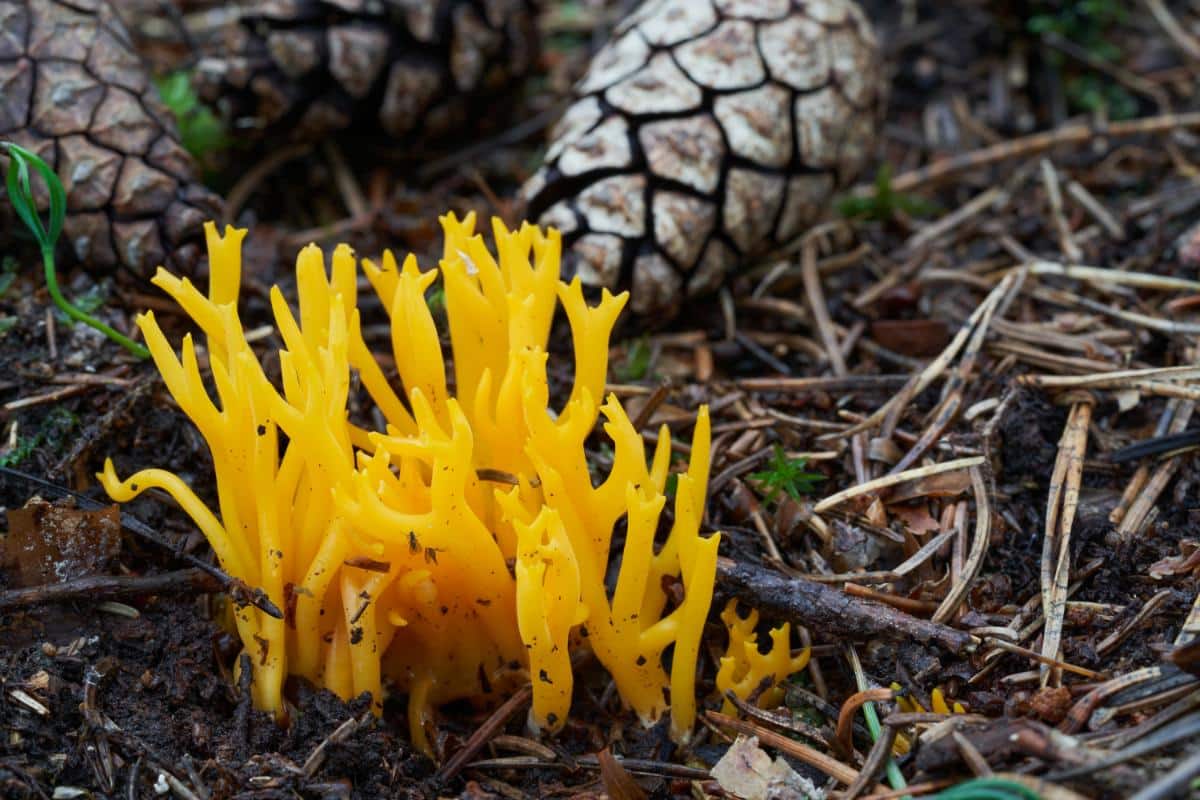
Jump to:
All About Jelly Antler Mushrooms
The jelly antler fungus is hard to miss, even though it’s small and low to the ground. The bright orange branches stand out against the conifer forest debris where it fruits. These fungi aren’t toxic, but they’re not really edible either. There’s not much to them, and they don’t taste like anything.
This species was first described by South African-born mycologist Christiaan Hendrik Persoon in 1794 in Germany. The mushroom was later transferred to the Calocera genus by Swedish mycologist Elias Magnus Fries in 1827. The Jelly Antler has since been found in various parts of the world, including North America, Asia, and Australia.
The name Calocera viscosa is derived from Latin, where “Calo” means ‘beautiful,’ “cera” translates to ‘horn,’ and “visc” signifies ‘viscid’ or ‘sticky,’ an apt description of this mushroom.
It is commonly known across various cultures as the yellow tuning fork, yellow false coral, and yellow staghorn, among others.
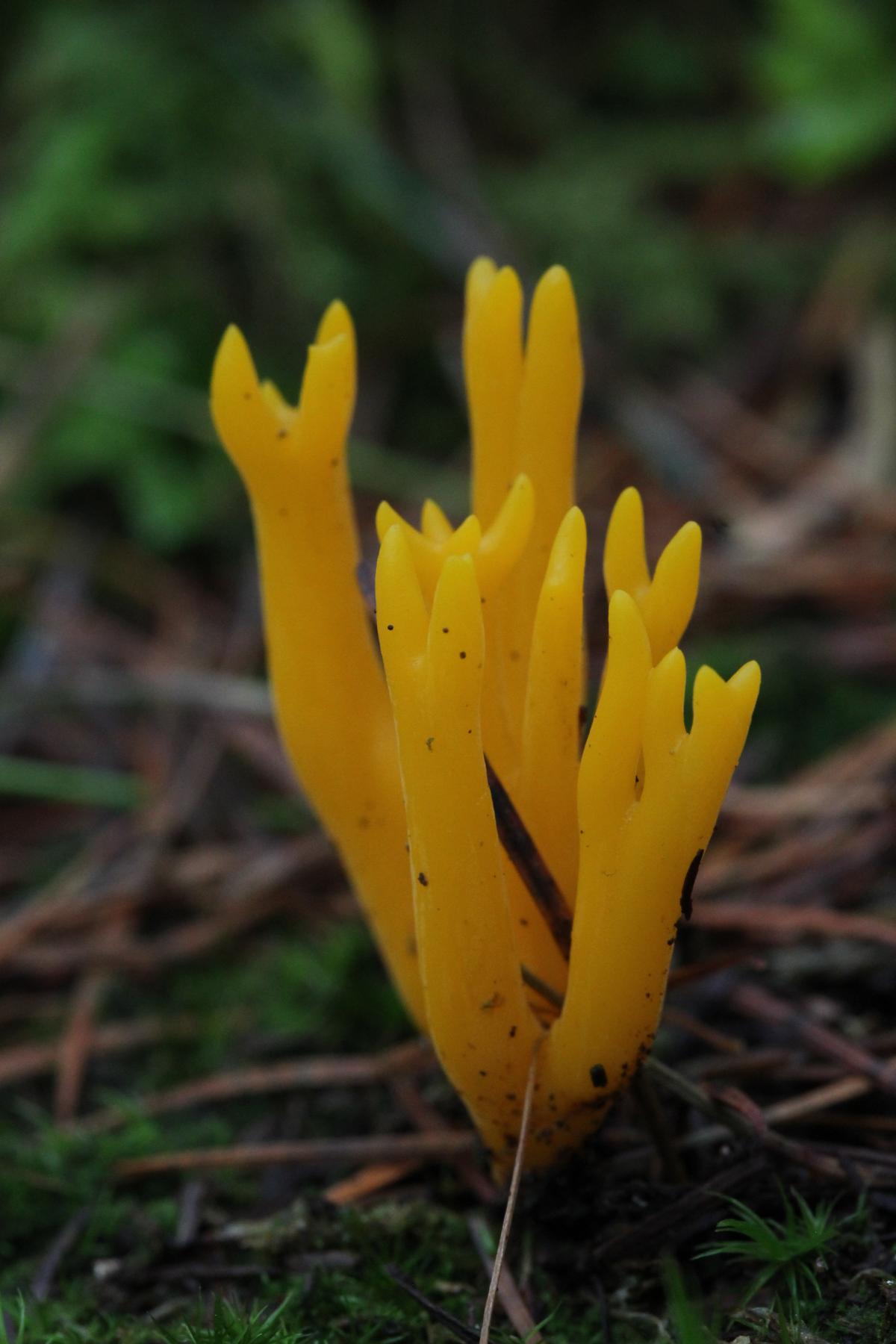
Jelly Antler Mushroom Identification Guide
Season
In North America, they can be found on the West Coast from October to March and in other regions from July to September.
Habitat
Jelly antler mushrooms are saprobic, meaning they obtain nutrients by decomposing dead organic matter. They are commonly found on the moss-covered deadwood of conifers, such as logs and stumps. These mushrooms thrive in cool and damp environments, making them more prevalent in summer and fall.
It grows in diverse habitats ranging from riverbanks and lakeshores at low elevations to subalpine sites and dry to mesic slopes in the montane zone, including both coniferous plantations and native conifer woodlands.
Jelly antlers, aka yellow staghorns, grow in troops or clusters, often covering large areas. They also grow in small groups, so you may find just a few or hundreds.
They always grow from decomposing conifer wood, but many times, that wood is buried or covered in moss, making it hard to see. This makes it look like the fungi are growing from the ground, but they are not.
These mushrooms are widely distributed in Europe, North America, Asia, and Australia.
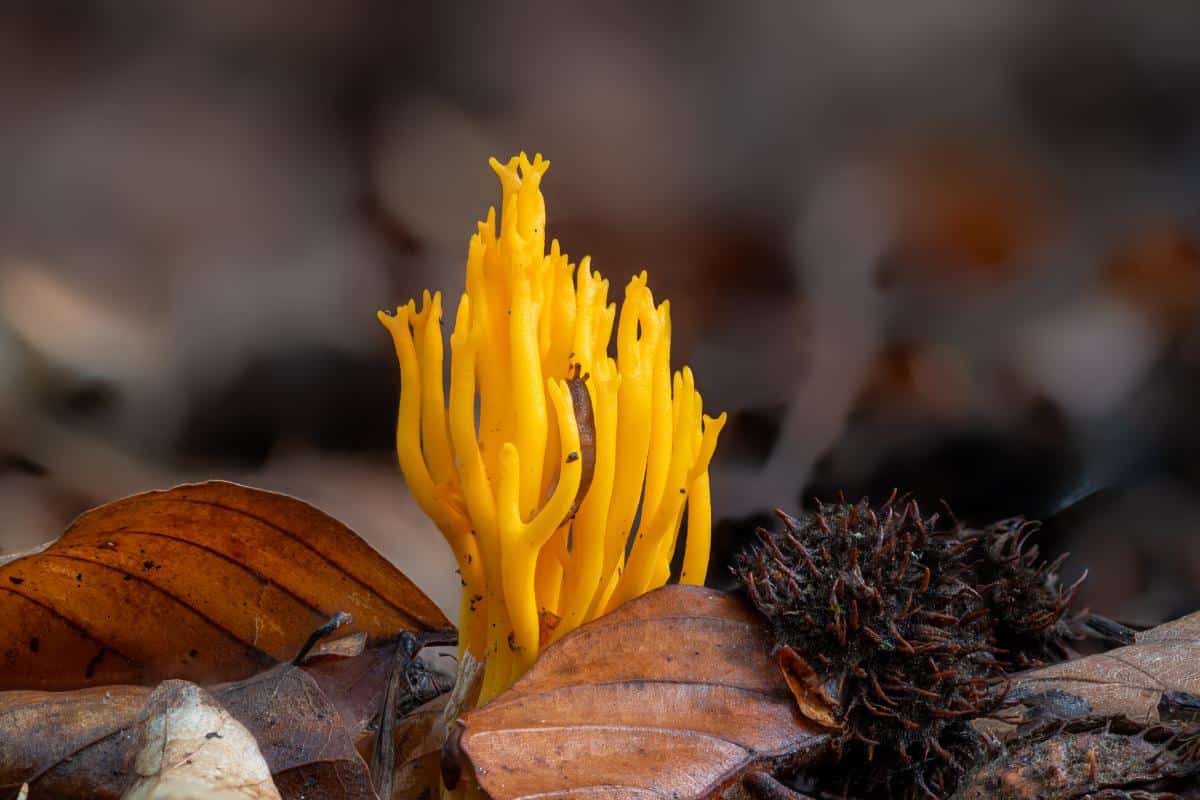
Identification
Cap and Branches
Jelly antler mushrooms are known for their distinctive antler-like branches that rise up from a joint base. Each branch is thin and cylinder-like in appearance. The branches are usually forked near the tips, resembling the antlers of a majestic deer. And, the tips of the branches are cristate – split several times to look like teeny fingers or prongs.
Although their “normal” form is clustered branches growing from a single base for cristate tips, they may also grow in small clusters or individually without much branching and missing the cristate tips. This can make identifying them a little tricky.
These mushrooms grow up to 4 inches tall. Their bright orange or orange-yellow color can intensify to orange-red in dry weather. They have a viscid or sticky surface, especially when wet.
Stem and Flesh
Jelly antler mushrooms have tough and gelatinous flesh, which gives them a unique texture. The flesh is slightly jellyish but also firm, like a dense gummy candy. The stems are usually paler than the branches and support the delicate branching structure. The flesh is as orange as the rest of the mushroom.
The gelatinous texture is a key identifying feature that sets it apart from coral-mushroom lookalikes. Coral mushrooms have brittle flesh that snaps easily, very unlike the jelly-like texture of the yellow staghorn.
Odor
The odor of jelly antler mushrooms is not distinctive.
Spore Print
The spore print of this mushroom is white.
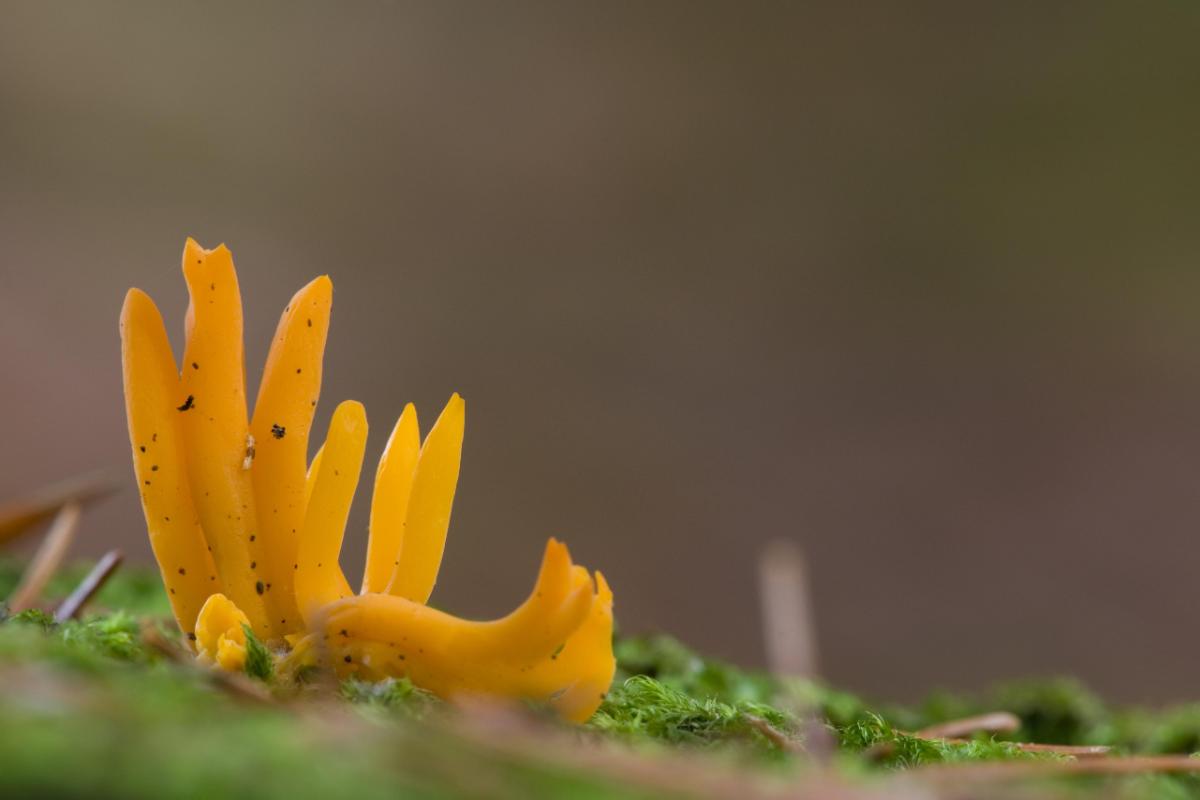
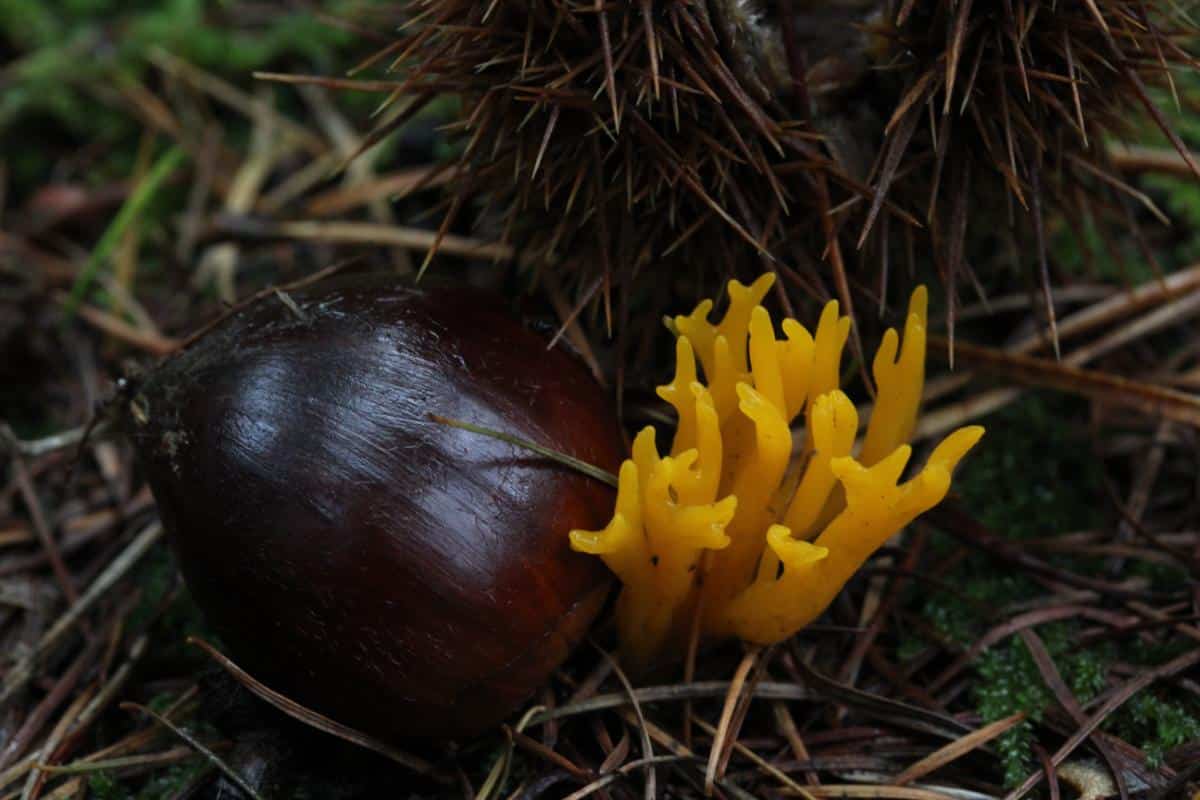
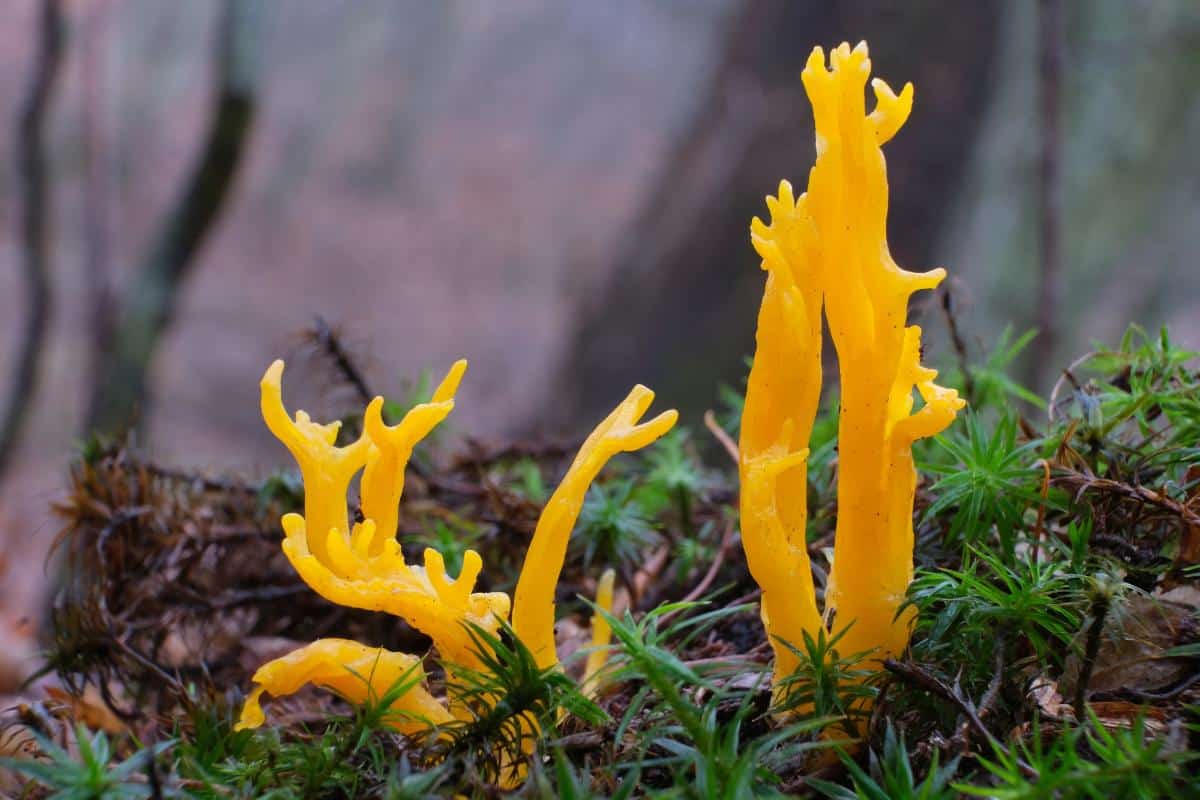

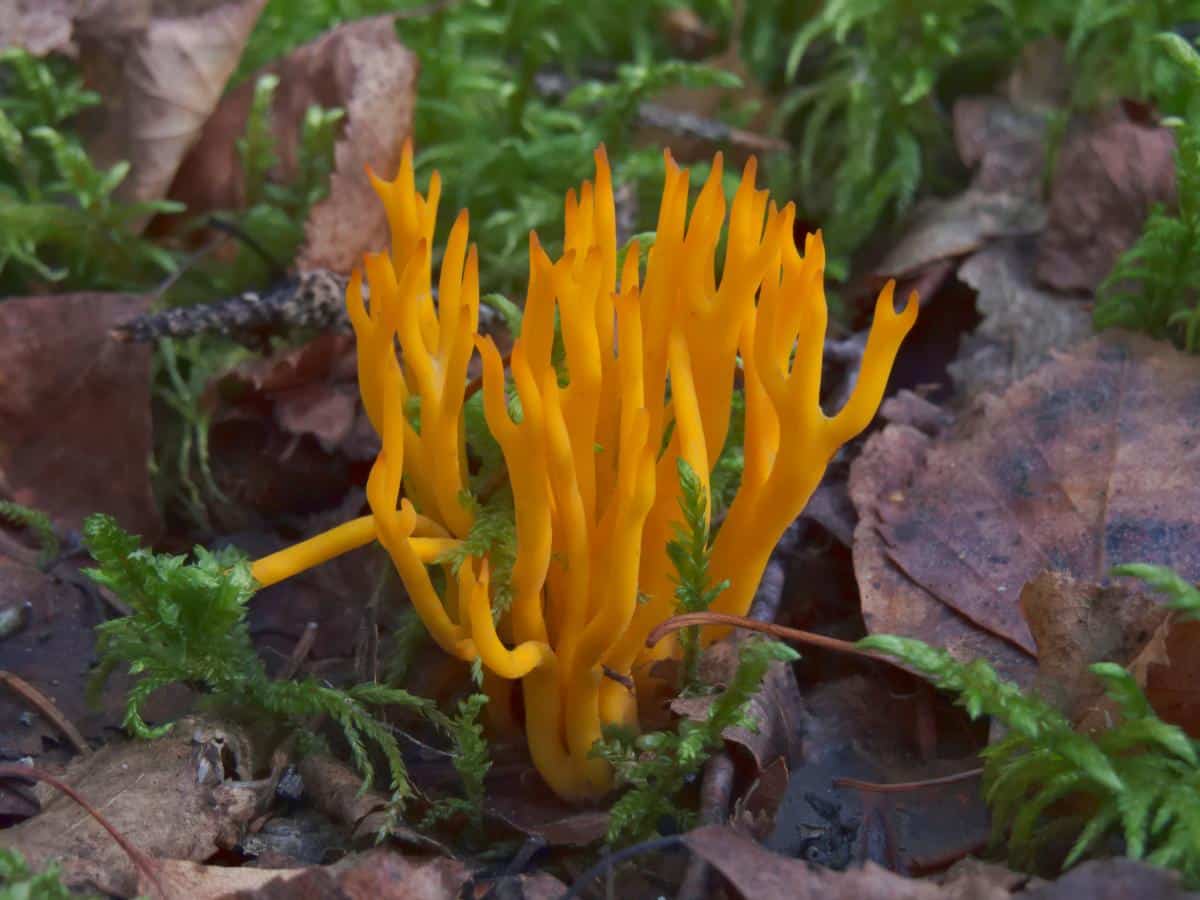
Jelly Antler Fungi Lookalikes
Jelly Fingers (Calocera cornea)
This is a close relative of the jelly antler mushroom and shares a similar appearance. However, it can be differentiated by its smaller size and yellow fruiting bodies that don’t branch very much. They may not have any branches or just a few. This species also grows from dead hardwood, not conifers.
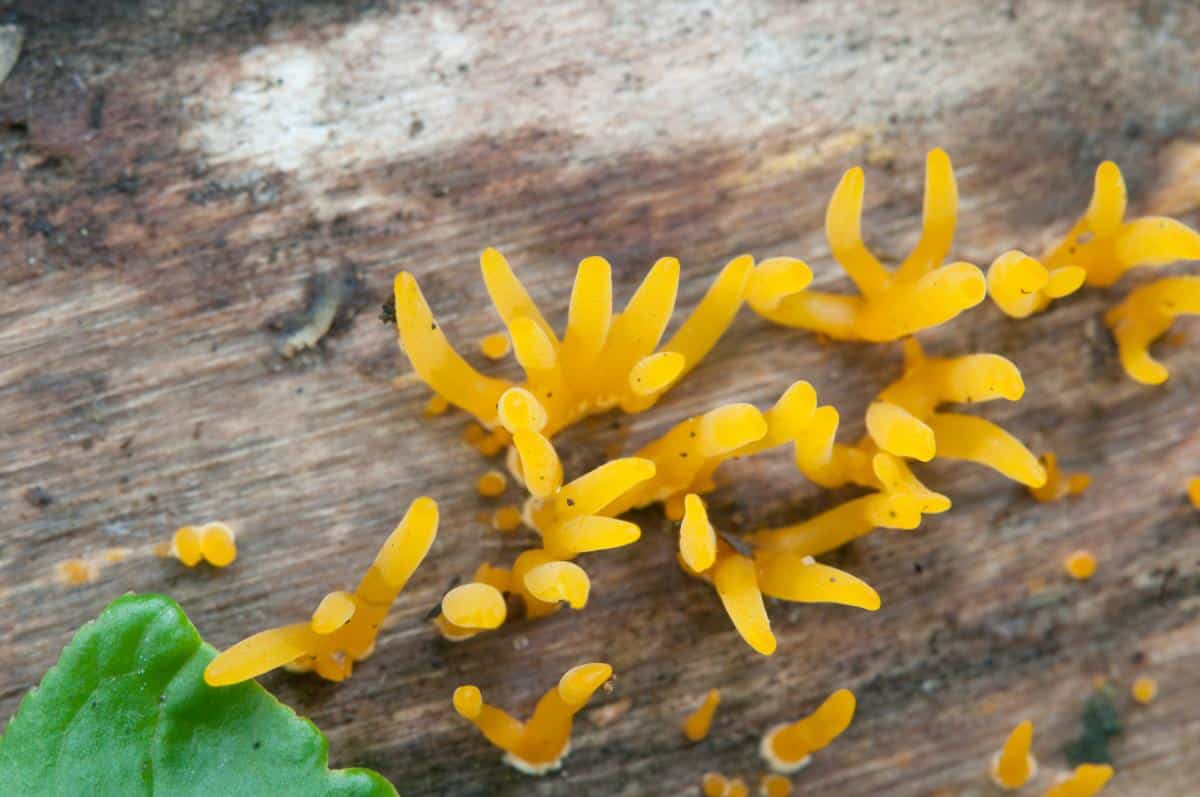
Meadow Coral (Clavulinopsis corniculata)
These coral-like fungi bear a resemblance to jelly antler mushrooms. However, they do not grow on decaying conifer; they prefer meadows and other open grassy areas.
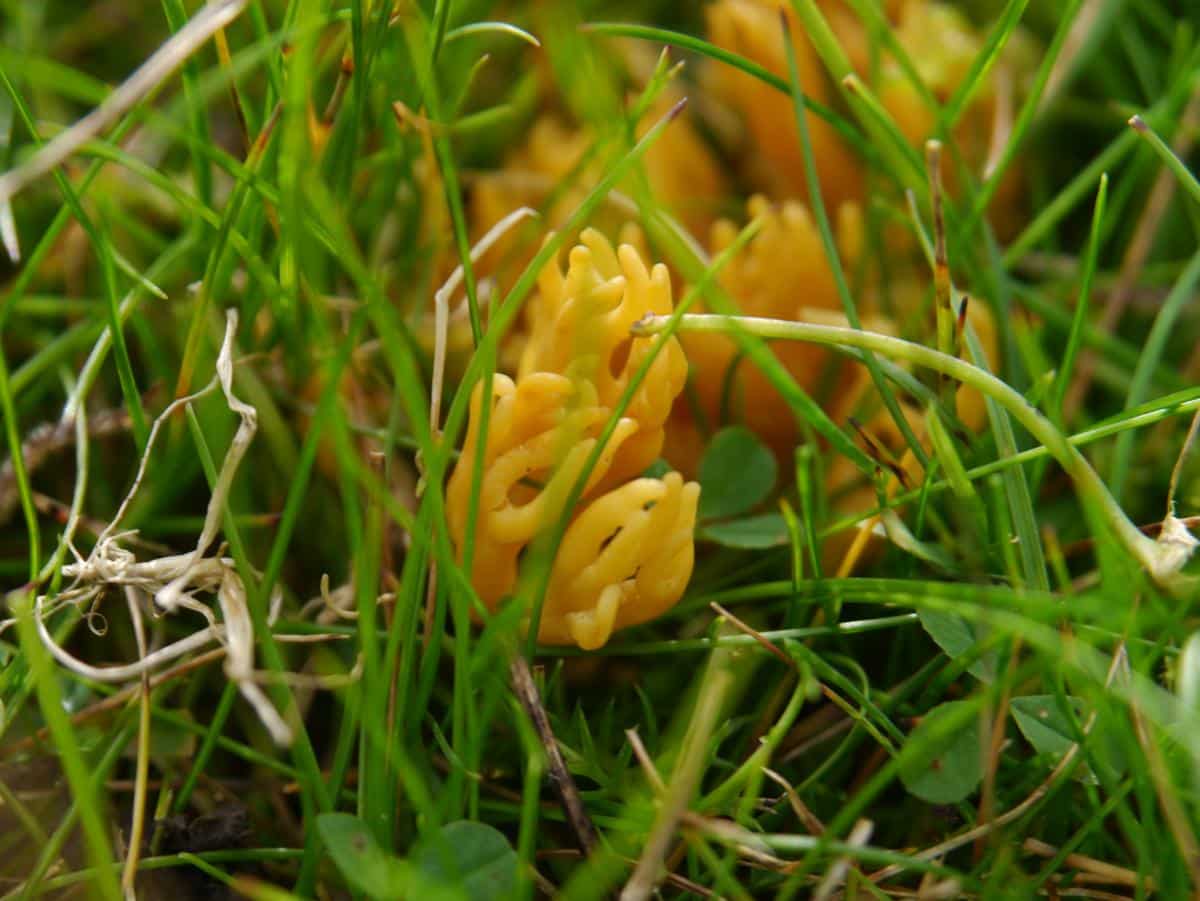
Golden Spindles (Clavulinopsis fusiformis)
The golden spindle fungus looks a lot like jelly antlers. It is bright yellow-orange and grows in clusters. There are some key differences, though. This species does not usually branch; if it does, it’s minimal. Also, it grows from the ground, usually in meadows or forests. It does not grow from decomposing conifer wood like the yellow staghorn. And, its flesh is brittle and fragile, very different from the yellow staghorns’ gelatinous flesh.
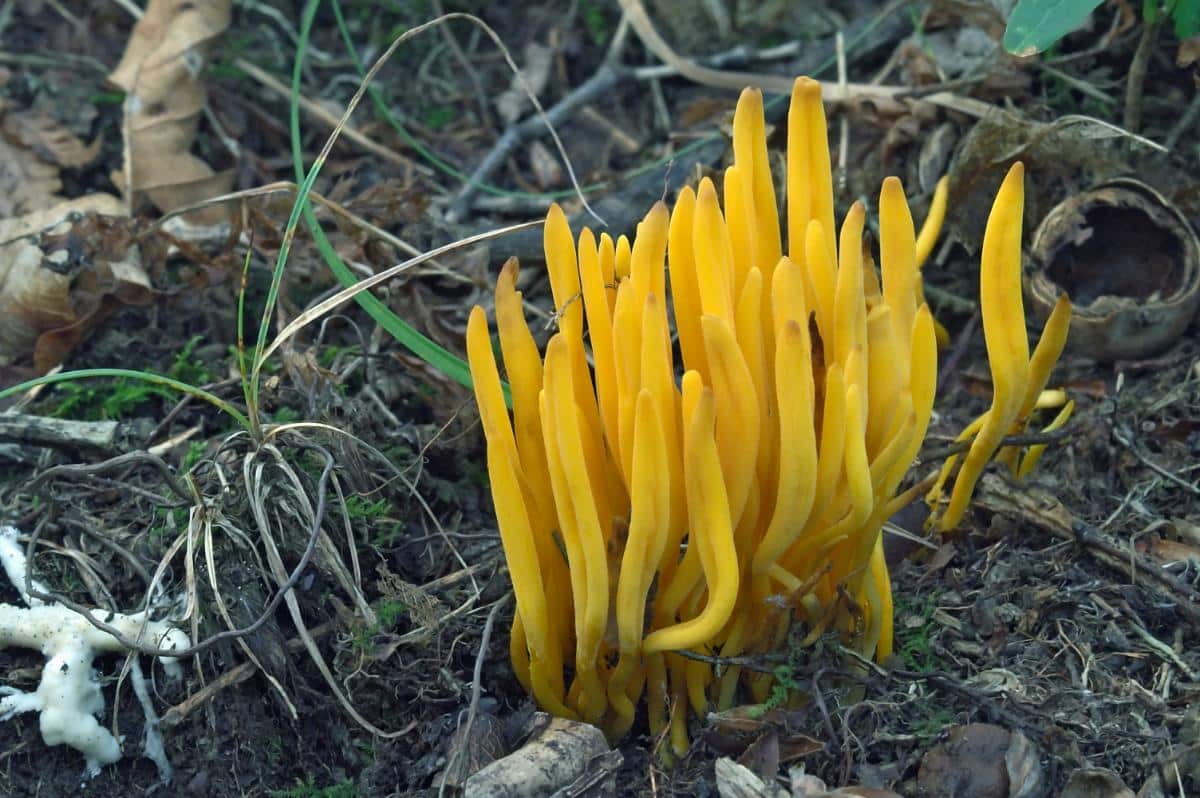
Coral Fungi
There are hundreds of coral species that have a passing resemblance to jelly antlers. They grow similarly, with many branches fruiting from a single, central base. And, the branches are forked and often cristated at the tips. However, coral fungi flesh is always brittle and breaks or snaps easily. Jelly antler flesh is gelatinous and bendy, like a gummy candy. This is the key way to tell them apart.
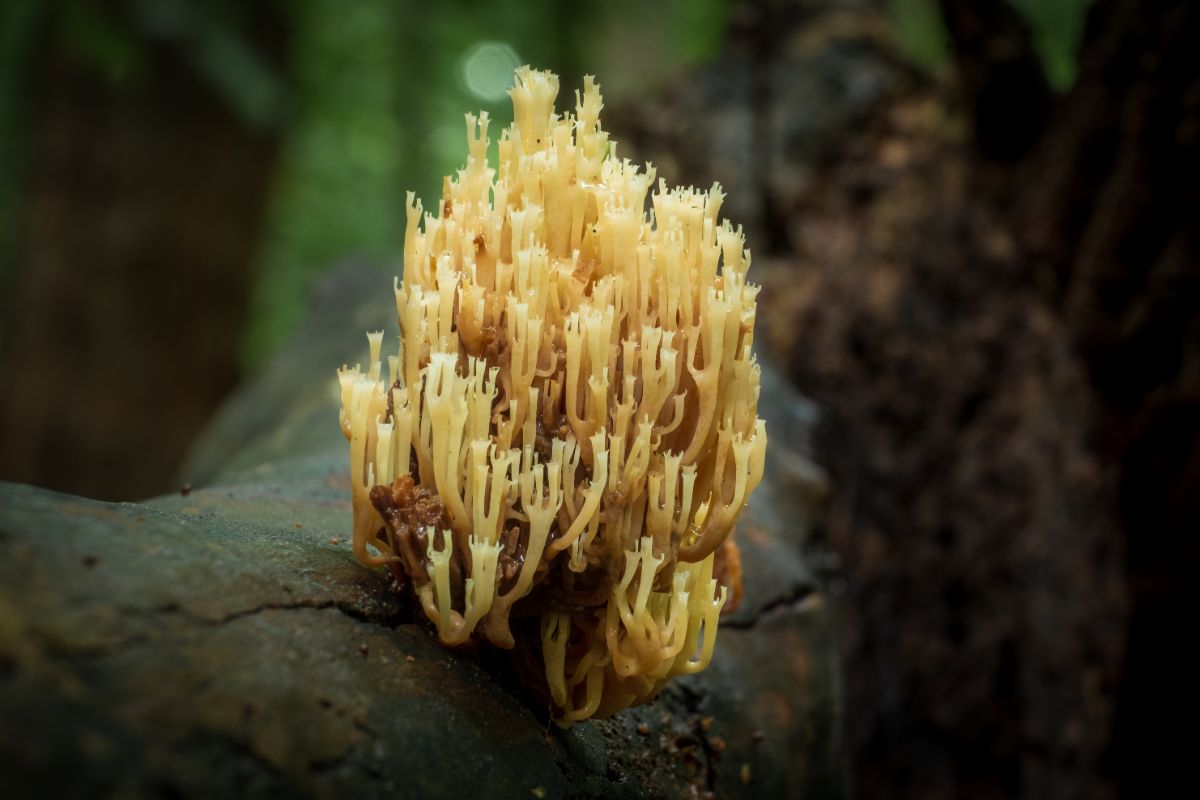
Edibility of Jelly Antler Mushrooms
These mushrooms are generally regarded as inedible due to their gelatinous texture, lack of flavor, and insubstantial proportions. However, some sources suggest that jelly antler mushrooms can be eaten. They provide little culinary value but do add vibrant color to dishes.
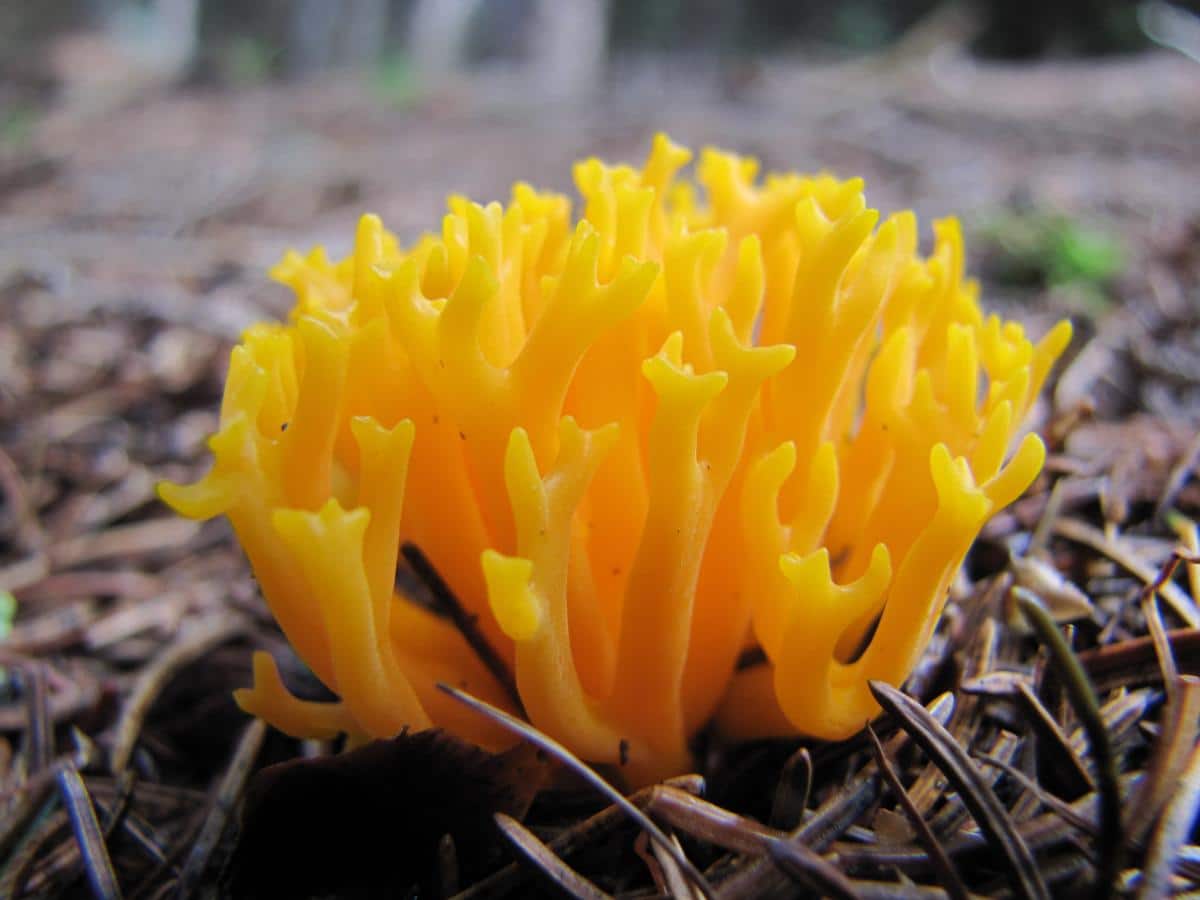
Jelly Antler Mushroom Common Questions
Is the Jelly Antler Yellow Staghorn Mushroom medicinal?
There are no known medicinal benefits to jelly antlers, aka yellow staghorn, mushrooms.
Can I eat jelly antler fungus?
Jelly antler fungus, also known as Yellow Stagshorn, is not toxic, but it is generally considered inedible due to its gelatinous consistency, lack of taste, and small size. While some sources might label it as edible, it is of minimal culinary value and is typically used only to add color to dishes that include other mushrooms.
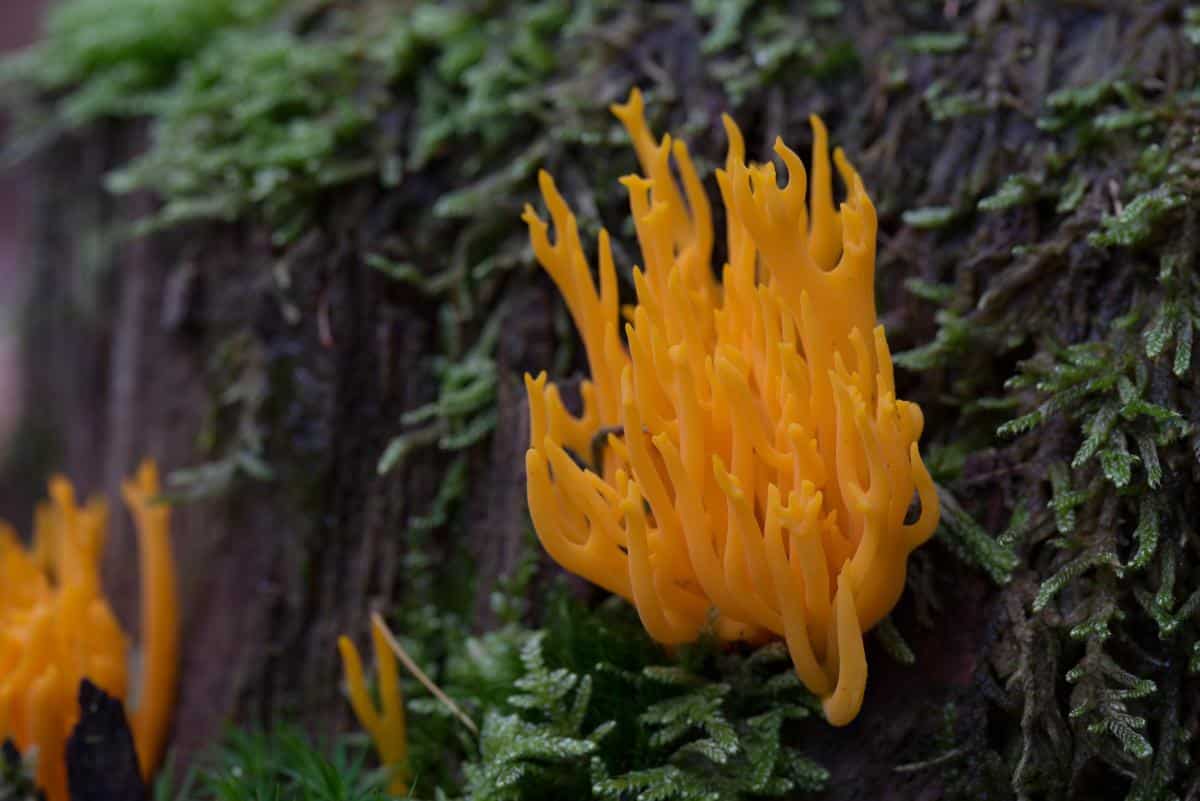

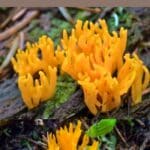
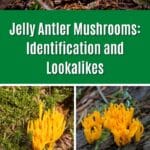
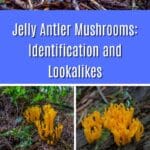
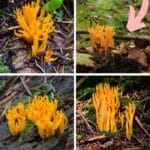




Leave a Reply